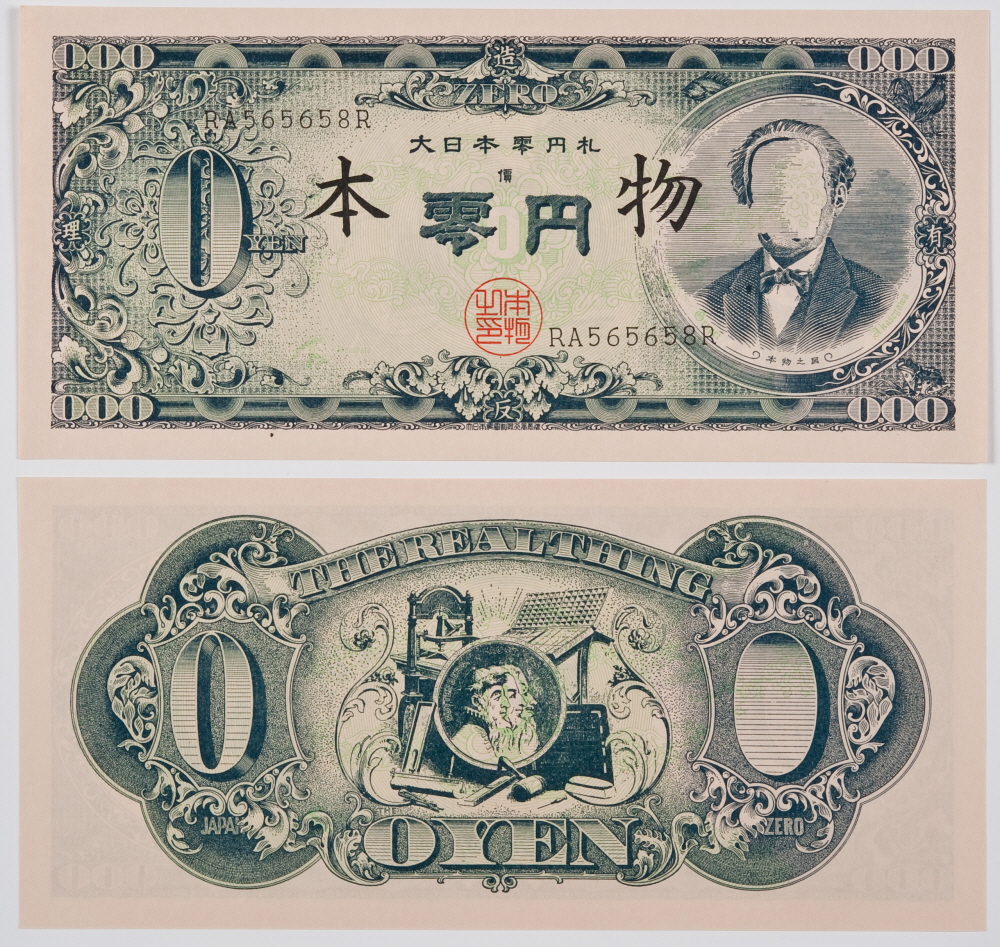|

AKASEGAWA Genpei, <Greater Japan Zero-Yen Notes>, P rinted material, 14.4��30.8cm, 1967
AKASEGAWA Genpei, <Model 1,000-Yen Notes III>, Letterpress p rint on craft paper, 29.3��19.3cm, 1963
AKASEGAWA Genpei, <Sakura Gaho Bandit Edition: celebrate on Sanrizuka!>, Poster, 102.9x72.7cm, 1971
AKASEGAWA Genpei, <Police Banzai>, Original drawing (pen on paper), 20.8��18.0cm, 1971
AKASEGAWA Genpei, <Red Army - P.F.L.P World War Declaration>, Poster, 73.0x51.5cm, 1971
AKASEGAWA Genpei, <2nd Anti-Imperialism International Conference >, Poster, 84.7.0��59.4cm, 1971
[Japan]AKASEGAWA Genpei Greater Japan Zero-Yen Notes Model 1,000-Yen Notes III Sakura Gaho Bandit Edition: celebrate on Sanrizuka! Police Banzai Red Army - P.F.L.P World War Declaration 2nd Anti-Imperialism International Conference
Akasegawa Genpei was born in Yokohama in 1937 and grew up in Oita, Kyushu. He was a member of the group Neo Dadaism Organizers formed in 1960. By creating objects in the Assemblage style from leftover goods, wrapping objects found around him in wrapping paper, and copying and enlarging the one thousand yen note, he developed the most unique and radical means of expression among the trends of the anti-art movement. Along the way, he was accused of copying one thousand yen notes and he had to fight in the Supreme Court. He was found guilty at the ��Trial of the One Thousand Yen Note�� and moved his place of activity to the world of publishing, working in journalism and illustration. It was at this point that he started to express art in an unprecedented area he referred to as ��Super-art.�� |